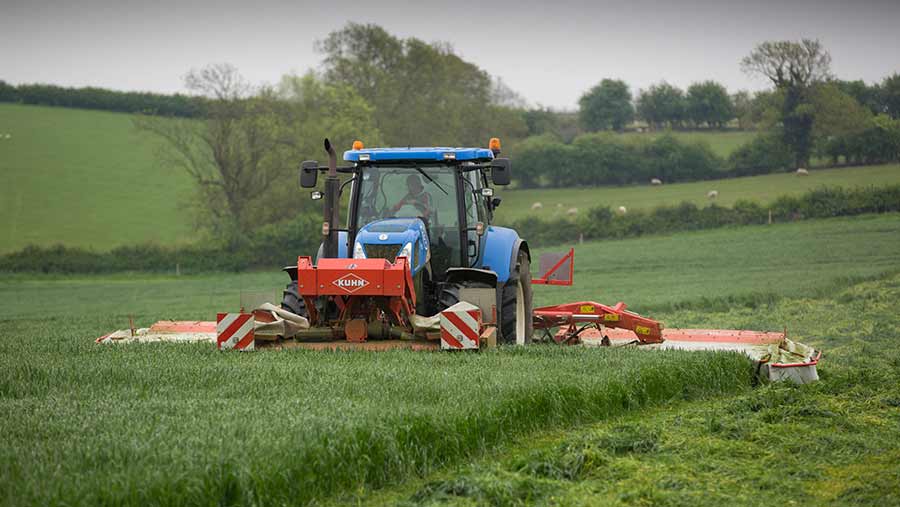Take grass silage first cut now, then invest in nutrition
 © Tim Scrivener
© Tim Scrivener Livestock producers are being advised not to delay cutting grass silage.
Levels of soil nitrogen and sulphur are critically low in many parts following high winter rainfall. The late spring is now also compounding the problem, warns independent grassland consultant George Fisher.
Soil analysis carried out by CF Fertilisers show nitrogen levels are as low as 30kg N/ha on some farms.
The temptation is to leave the first cut for another two to three weeks so yields can catch up, but this could have a serious effect on forage quality and later grass growth, Dr Fisher says.
See also: 5-step guide to reducing silage losses
“Grass maturity depends mostly on day length, so leaving it in the field longer will result in greater seed head production and the resulting feeding quality drop will far outweigh any yield gain.
“Regrowth will be slower, too, and you will end up forever chasing quality.”
Invest in second cut
Dr Fisher says if ever there was a year to focus on second-cut silage, this year is it. Many producers are looking to cut input costs and forage stocks are low due to extended housing.
“The best option is to take the first cut close to the same time as usual and then invest in a full after-cut nutrition programme to ensure the second cut delivers the right yields and quality.”
Slurry and farmyard manure applied earlier in the year will have largely been lost by now and it is important not to cut corners. Growers should prepare a fertiliser plan in the coming weeks to avoid shortfalls in silage quantity and quality.
“Trials suggest a 20-40% increase in dry matter yield is possible by using sulphur for the second cut. With known effects on lifting protein and soluble sugar levels, it will really come into its own this year.”
Soil analysis
Dr Fisher recommends conducting a soil analysis to take into account all nutrients from manures. Then, for the second cut he recommends typically applying 80-100kg N/ha, 25-40kg sulphate/ha and 60-90kg potash/ha to meet the plants’ growth requirements.
CF Fertilisers agronomist Alli Grundy says to maximise the cost-effectiveness of fertiliser use in times of low commodity prices, it is essential to know exactly what soil reserves you have and build individual fertiliser plans accordingly.
“Grassland producers have a lot to gain from taking a more agronomic approach to their crops. At the very least, regular soil sampling for P, K, Mg and pH is essential to identify nutrient needs accurately, as this year is proving,” she says.
“There is little point in either putting more on than you really need or too little to achieve a crop’s full potential – especially as home-grown crops are the most cost-effective feeds there are.”
